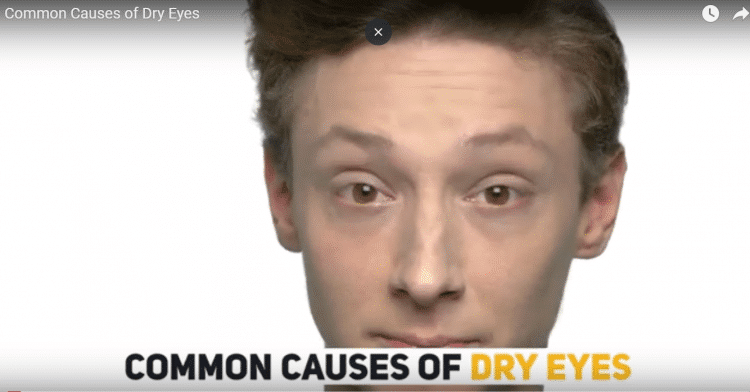Dry eye syndrome is a common condition impacting over 30 million people across the country. Colorado’s dry climate can create conditions that often exacerbate this condition. In many instances, dry eyes lead to a variety of uncomfortable symptoms.
At Kirk Eye Center, we offer a variety of dry eye treatment options to alleviate any discomfort you’re experiencing. The most effective solution for you will depend on the specific cause of your condition.
Meibomian Gland Dysfunction: The Most Common Cause of Dry Eye Syndrome
Dry eyes occur when your eyes fail to produce an adequate amount or quality of tear film. This tear film is responsible for ensuring the surface of your eyes remain most. There are three layers in your tear film:
- Oily outer layer that prevents excessive tear evaporation
- Watery middle (aqueous) layer that cleans the eye
- Inner mucous layer that allows the tear film to stick to the surface of your eye
The Meibomian gland is responsible for secreting the oils that comprise the outer layer of tear film. This oily layer creates a protective coating for the aqueous layer. A condition called Meibomian Gland Dysfunction (MGD) occurs when this gland becomes impeded, preventing your eye from secreting enough oil to adequately protect the aqueous layer.
Without a properly functioning outer layer of tear film, you experience excessive evaporation of the watery aqueous layer. This creates friction between your cornea and eyelid which often is very uncomfortable.
MGD is responsible for roughly 86% of dry eye cases. When left untreated, your Meibomian gland’s oil production will progressively decrease until it no longer secretes any oil. If your condition is allowed to persist to this point, the surface of your eye may become damaged, potentially resulting in long-term vision issues and chronic discomfort. For this reason, it’s crucial to treat MGD before dry eye syndrome progresses to this advanced stage.
Other Potential Causes of Dry Eyes
Some other potential causes of dry eyes may include:
- Allergies
- Age
- Dry climate
- Auto-immune diseases such as rheumatoid arthritis or lupus
- Pollution
- Certain medications
Diagnosing and Treating Dry Eye Syndrome
In order to properly treat the condition, our doctors must first identify the cause of your dry eyes. There are several steps to the diagnostic process:
- We use LipiScan to generate a high definition image of your Meigobian glands. This allows us to determine whether they are functioning properly or if MGD is the likely cause of your condition.
- We evaluate your tear osmolarity using TearLab. Elevated levels of tear osmolarity is most often an indicator that you are suffering from dry eye syndrome and not experiencing dry eyes due to environmental factors.
Based on the results of these diagnostic tools, our doctors will customize your treatment plan. If we determine MGD to be the primary cause of your dry eyes, we’ll typically treat the condition using one of the following methods:
- LipiFlow – Vectored Thermal Pulsation technology delivers heat to the inside of your eyelids. Gentle massage is then used to eliminate any obstructions preventing your Meibomian glands from secreting oil properly.
- Intense Pulsed Light (IPL) Therapy – IPL therapy liquefies any hardened oils obstructing your Meibomian glands. These oils are then cleared away to restore proper production of your tear film’s outer layer.
Contact our Loveland Ophthalmologist
Please contact Kirk Eye Center using the form on this page or call 970-669-1107 today to schedule a dry eye consultation. We serve patients in Loveland, Fort Collins and throughout Northern Colorado.


